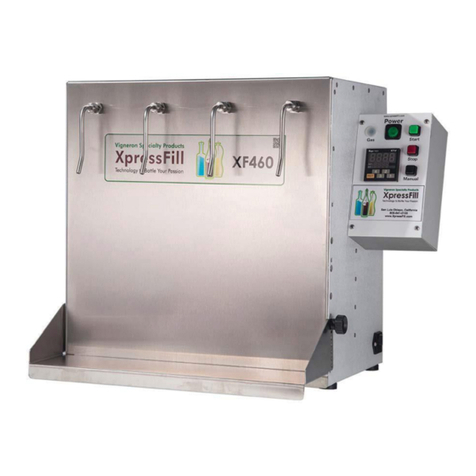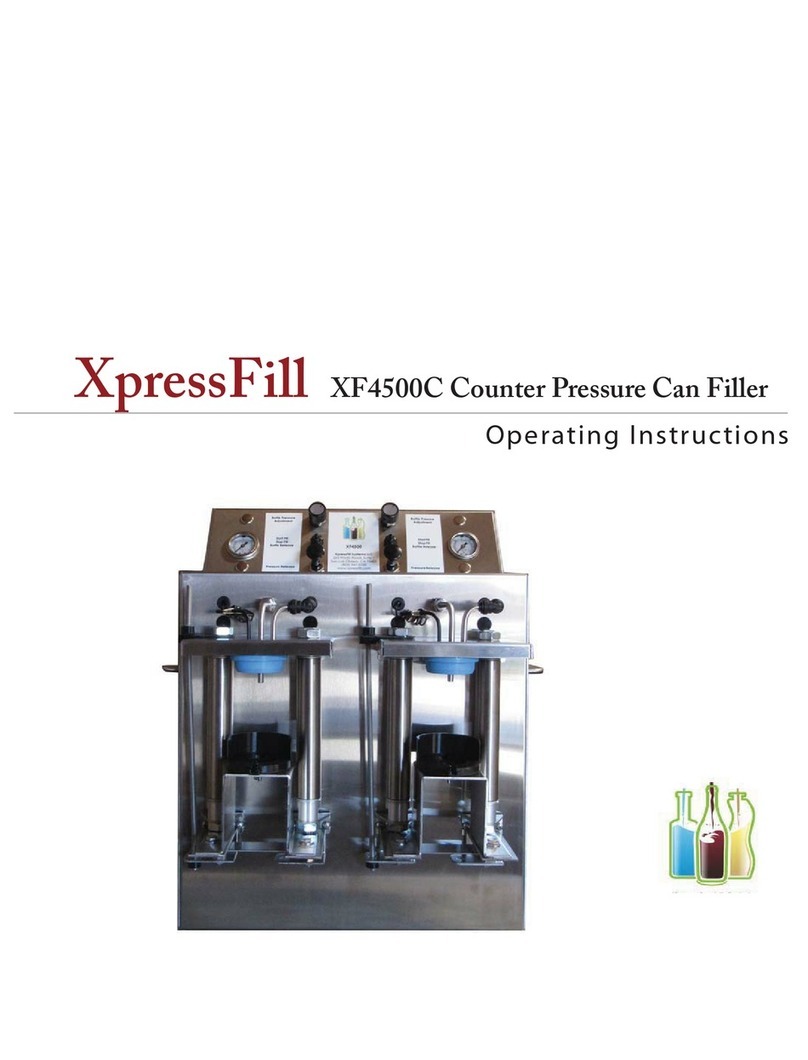1. Fill Indicator Light: This green light will turn on
while the liquid is flowing from the spout.
2. Can Pressure Adjustment Knob: This knob allows
you to adjust the pressure inside your can. Turning
the knob counterclockwise will lower the pressure,
while turning it clockwise will increase the pressure.
This will typically only need to be adjusted when
starting a new filling session and during cleaning.
3. Pressure Gauge: Indicates the pressure inside the
can.
4. Fill Switch: The three (3) position fill switch turns
the fill cycle on (up position), turns the fill cycle off
but maintains a seal (center position), and releases
the can supporting foot rest after the can pressure
has been safely released (down position).
5. Top Off button This button allows you to add a
“shot” of beverage after the can has been released
from the stopper. This action will create an
additional volume of foam o which to place the lid
prior to seaming. This action is optional depending
on the desired amount of foam.
6. Pressure Release Switch: This switch is used to
manually control a valve to release the pressure in
the can. The switch should be in the down position
to start the fill sequence so the can will pressurize.
Once the fill is complete, set the Fill Toggle Switch
to the “Stop Fill” position and flip the Pressure
Release Switch to the up position to release the
pressure in the can.
7. Fill and Purge Spout: This spout is used for the gas
flush and liquid filling.
8. Level Sensor: This sensor sets the level at which the
flow will stop and be positioned up or down to
change the fill level to your specifications. Be
careful not to pull on the electrical wire.
9. Pressure Release Tube: This tube is vented to relieve
the pressure in your can.
10. Stopper: The stopper seals your can and helps to
control the level your can is filled to.
11. Pneumatic Ram: The pneumatic ram lifts the can
foot rest and is activated when the filling sequence
begins.
12. Can Foot Rest: These feet will hold your can
securely in place once the fill sequence is started.
Do not put your hands between the can and the foot
to prevent injury.
265
Prado
Road,
Suite
1
|
San
Luis
Obispo,
CA
93
401
|
805.541
.0100
|
xpress
fill.com
|
[email protected]7| XpressFill Systems LLC





























